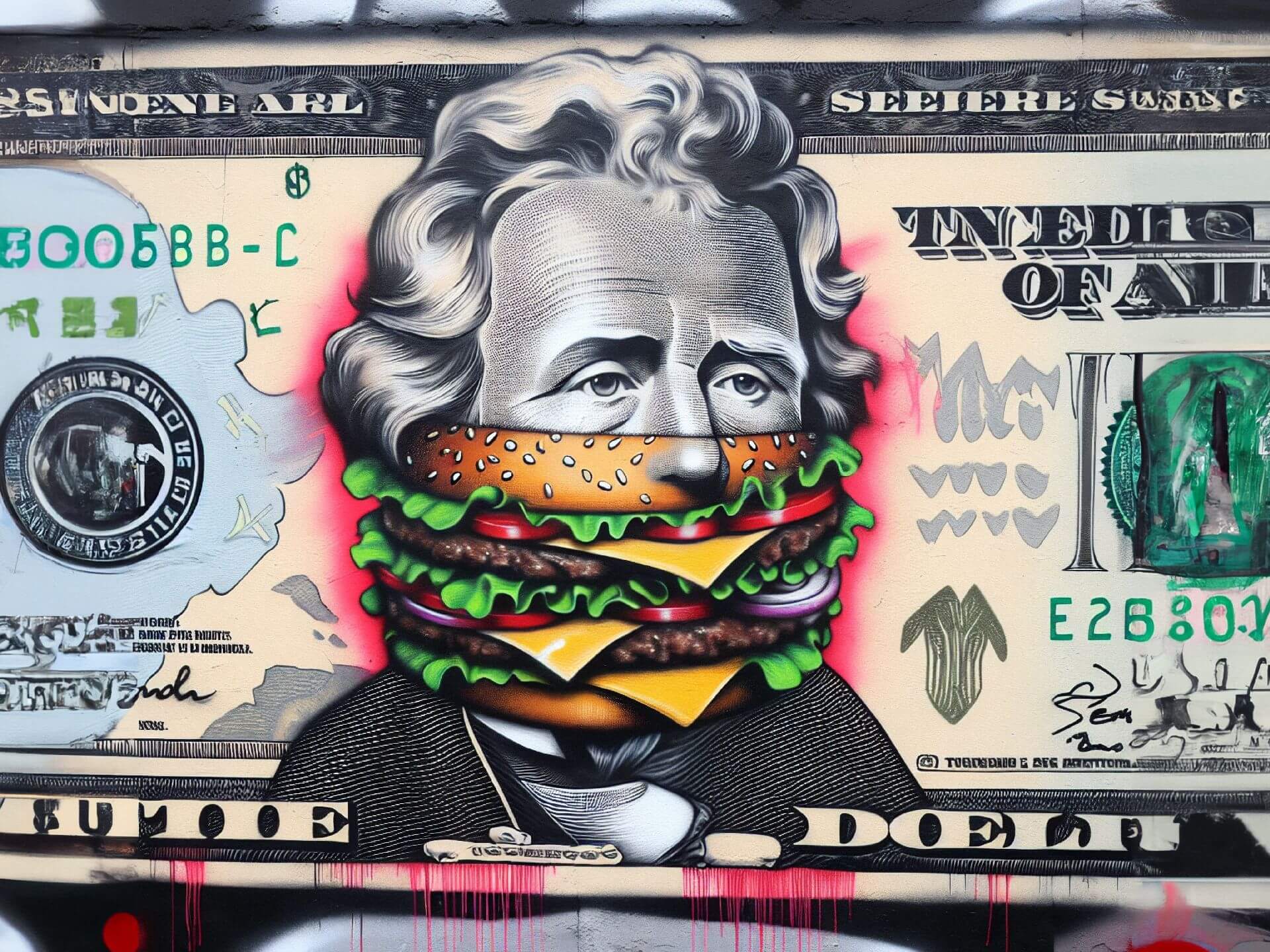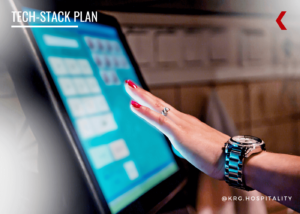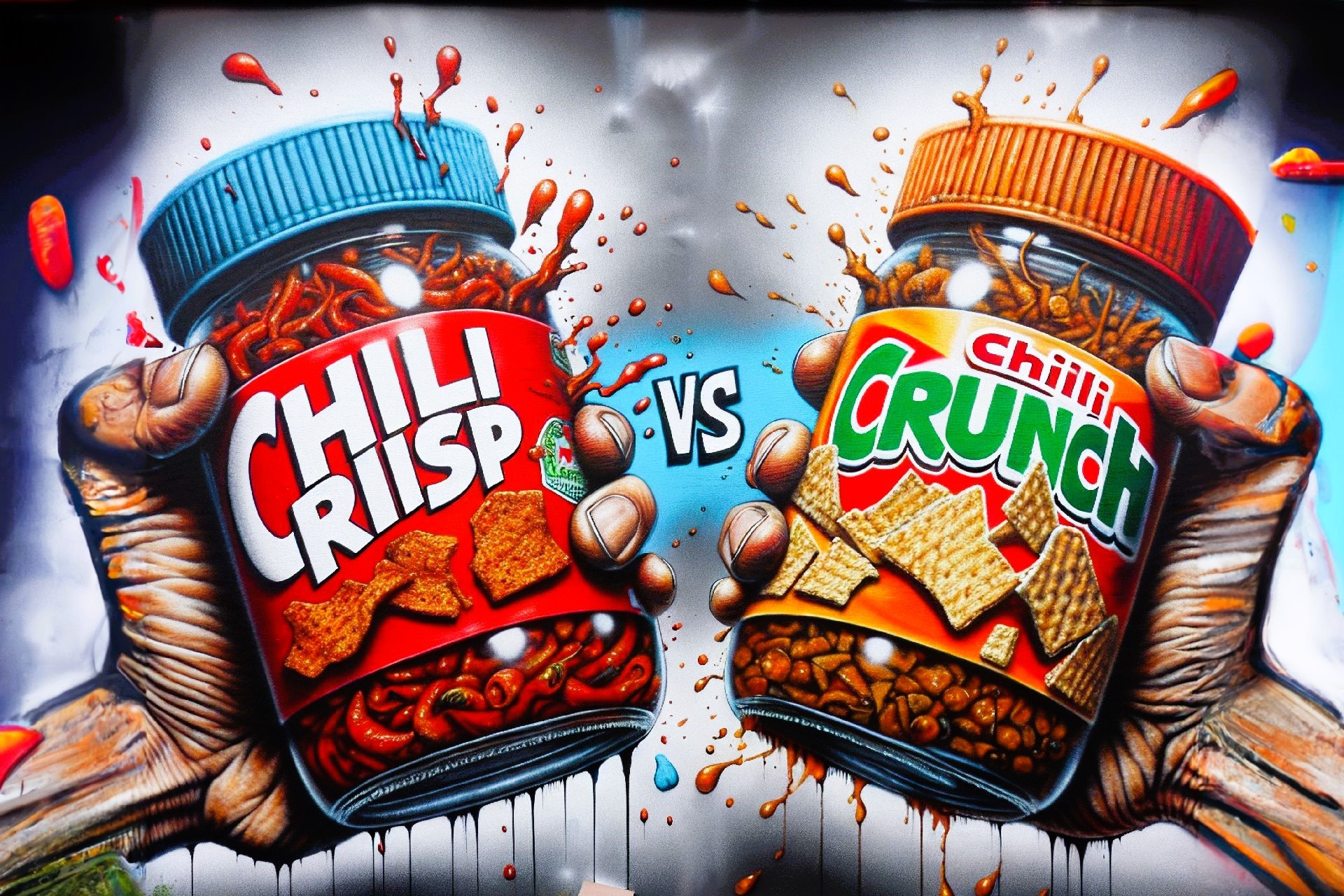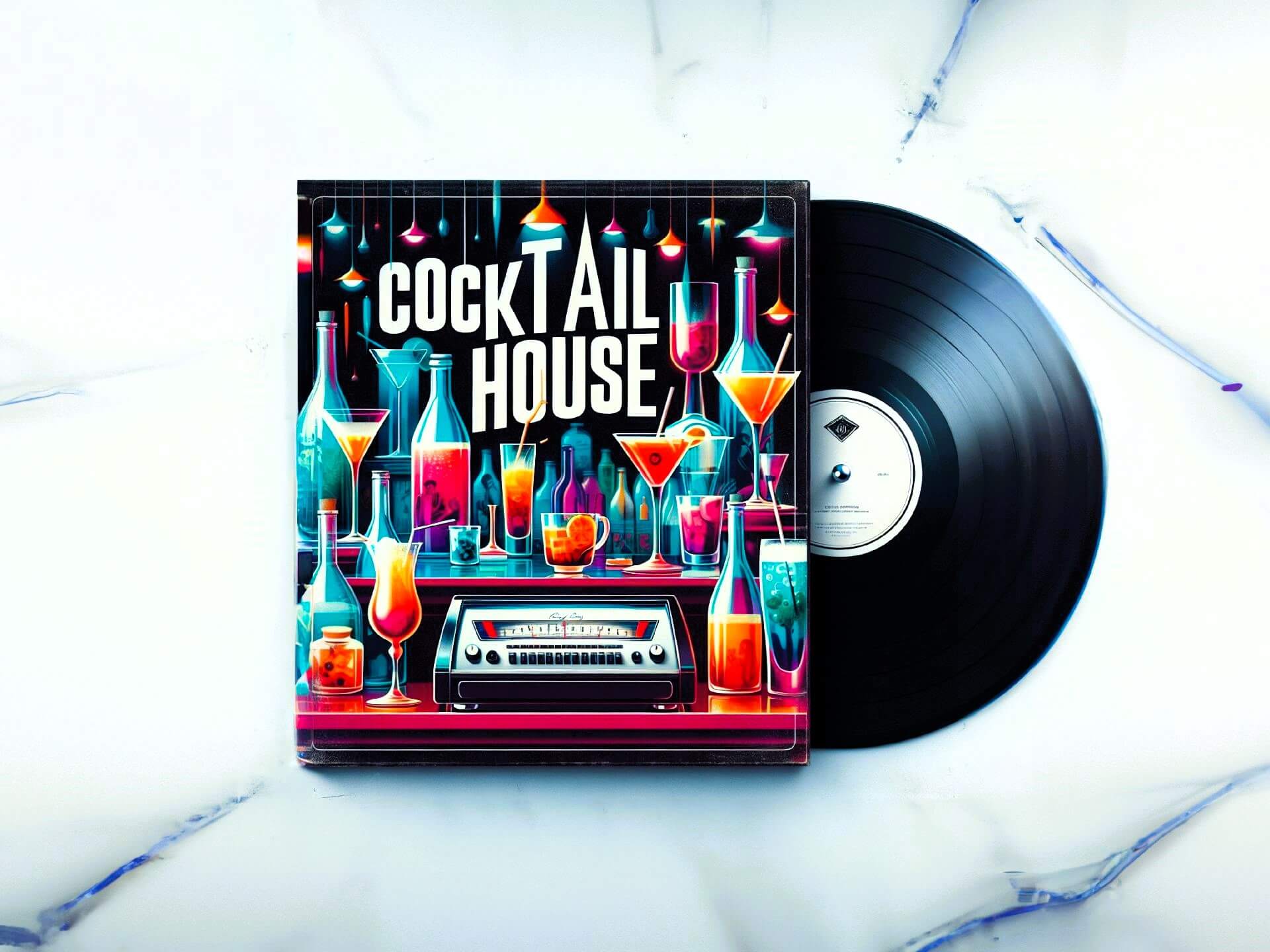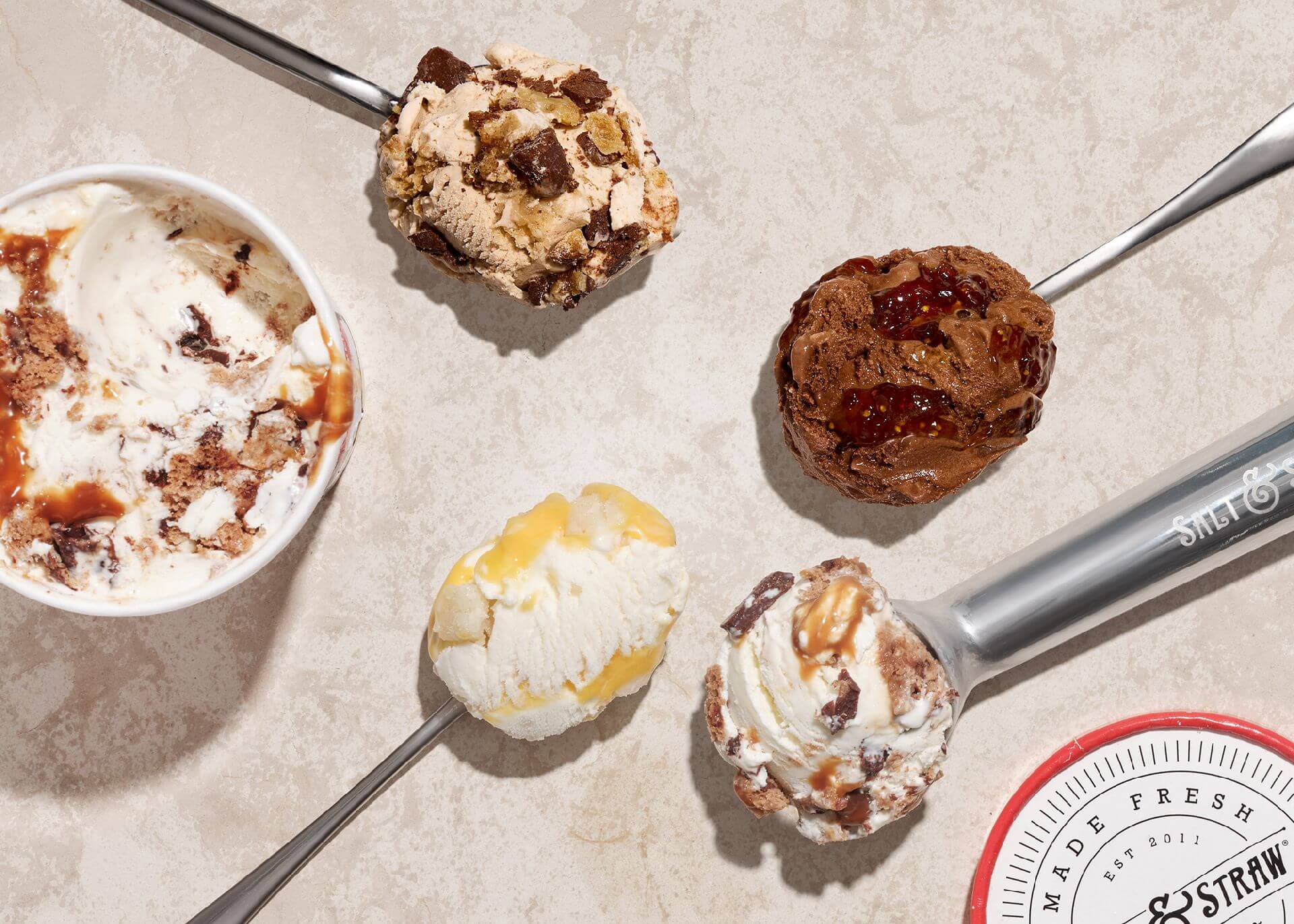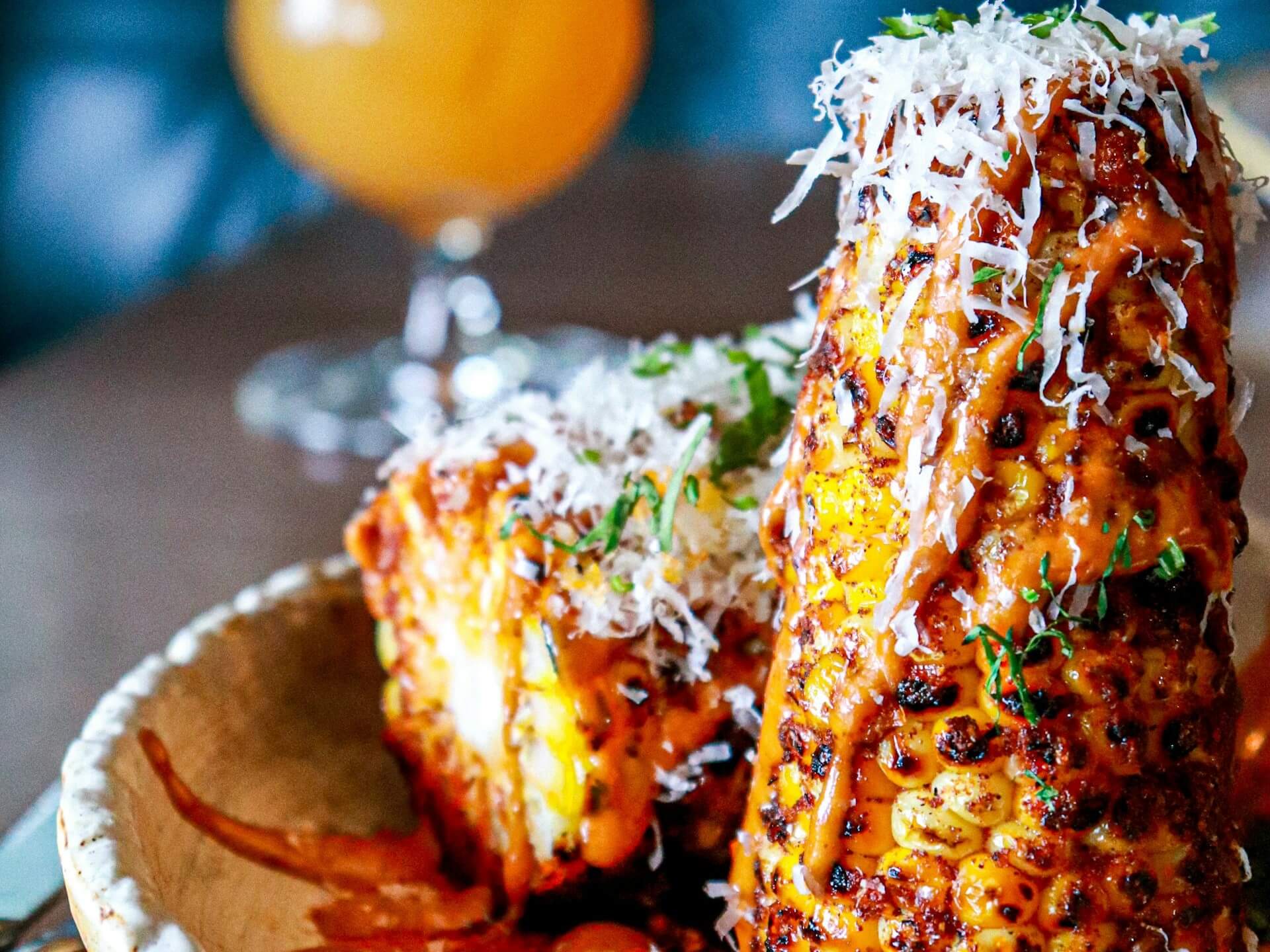TOTCF Reveals Regional Top 10 Honorees
by David Klemt
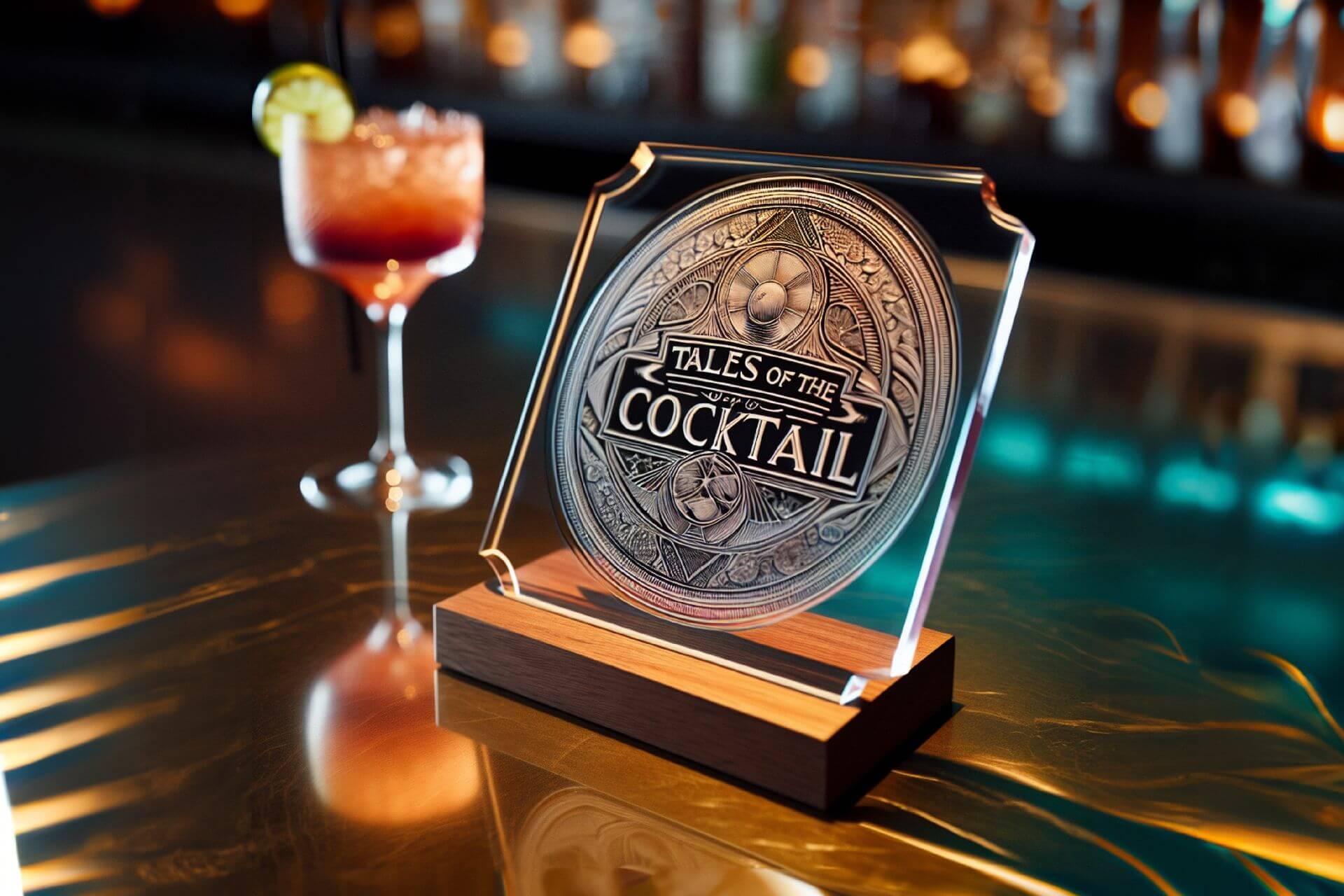
This is what Shutterstock’s AI think a Spirited Award looks like. At least the spelling is accurate.
Please join us in raising a glass of your favorite beverage—full-, low-, or no-ABV—to the 18th annual Spirited Awards Regional Top 10 Honorees.
Overall, New York City lays claim to the most honorees with a staggering 27. In second place among the American cities is Chicago, with 17 honorees. New Orleans comes in at third with 13 honorees dotted throughout the city.
That brings us to Canada. There’s a tie between Montréal, Québec, and Toronto, Ontario, for first place. Each city boasts 15 Regional Top 10 Honorees. Vancouver follows with 11 honorees. Appearing in two categories is Dartmouth, Nova Scotia’s Dear Friend Bar. There are also two honorees in Québec City, Québec.
As you can see, a handful of cities throughout North America are doing very well in terms of the bar scene. Internationally, London is home to 17 honorees, Singapore claims 15, and Mexico City boasts 12 honorees.
You’ll find the entire list of honorees below, starting with America. What can I say? I just have to be different. Cheers!
American Honorees
Best US Bar Team presented by William Grant & Sons
Best US Bar Team: US Central
- Anna’s (New Orleans, Louisiana)
- Beachbum Berry’s Latitude 29 (New Orleans, Louisiana)
- Best Intentions (Chicago, Illinois)
- DrinkWell (Austin, Texas)
- Grey Ghost (Detroit, Michigan)
- Jewel of the South (New Orleans, Louisiana)
- Meteor (Minneapolis, Minnesota)
- Nickel City (Austin, Texas)
- Sportsman’s Club (Chicago, Illinois)
- Three Dots and a Dash (Chicago, Illinois)
Best US Bar Team: US East
- Allegory DC (Washington, DC)
- Bar Belly (New York, New York)
- Bar Goto (New York, New York)
- Martiny’s (New York, New York)
- Milady’s (New York, New York)
- Mister Paradise (New York, New York)
- Old Glory (Nashville, Tennessee)
- Overstory (New York, New York)
- Proof (Charleston, South Carolina)
- Service Bar (Washington, DC)
Best US Bar Team: US West
- Accomplice Bar (Los Angeles, California)
- Century Grand (Phoenix, Arizona)
- Employees Only Los Angeles (Los Angeles, California)
- Highball Cocktail Bar (Phoenix, Arizona)
- Navy Strength (Seattle, Washington)
- Pacific Cocktail Haven (San Francisco, California)
- Strong Water Anaheim (Anaheim, California)
- Thunderbolt (Los Angeles, California)
- True Laurel (San Francisco, California)
- Yacht Club (Denver, Colorado)
Best US Cocktail Bar presented by Del Maguey Mezcal
Best US Cocktail Bar: US Central*
- Adiõs Bar (Birmingham, Alabama)
- Bar Tonique (New Orleans, Louisiana)
- Beachbum Berry’s Latitude 29 (New Orleans, Louisiana)
- Best Intentions (Chicago, Illinois)
- DrinkWell (Austin, Texas)
- Here Nor There (Austin, Texas)
- Julep (Houston, Texas)
- Kiesling (Detroit, Michigan)
- Meadowlark (Chicago, Illinois)
- MONEYGUN (Chicago, Illinois)
- Sparrow (Chicago, Illinois)
- Standby (Detroit, Michigan)
Best US Cocktail Bar: US East
- Bar Belly (New York, New York)
- Bar Goto (New York, New York)
- barmini by José Andrés (Washington, DC)
- Dear Irving Gramercy (New York, New York)
- Double Chicken Please (New York, New York)
- Martiny’s (New York, New York)
- Milady’s (New York, New York)
- Mister Paradise (New York, New York)
- Overstory (New York, New York)
- Service Bar (Washington, DC)
Best US Cocktail Bar: US West
- Baby Gee (Long Beach, California)
- Capri Club (Los Angeles, California)
- Foreign National (Seattle, Washington)
- Happy Accidents (Albuquerque, New Mexico)
- Highball Cocktail Bar (Phoenix, Arizona)
- The Doctor’s Office (Seattle, Washington)
- Thunderbolt (Los Angeles, California)
- Trick Dog (San Francisco, California)
- True Laurel (San Francisco, California)
- Yacht Club (Denver, Colorado)
Best US Hotel Bar presented by Grey Goose
Best US Hotel Bar: US Central
- Catbird at Thompson Dallas Hotel (Dallas, Texas)
- Chandelier Bar at Four Seasons Hotel New Orleans (New Orleans, Louisiana)
- Dovetail Bar at The Schaeffer Hotel (New Orleans, Louisiana)
- Lazy Bird at The Hoxton (Chicago, Illinois)
- Midnight Rambler at The Joule (Dallas, Texas)
- Milk Room at the Chicago Athletic Association Hotel (Chicago, Illinois)
- Otoko x Watertrade at South Congress Hotel (Austin, Texas)
- The Elysian Bar at Hotel Peter and Paul (New Orleans, Louisiana)
- The Sazerac Bar at The Roosevelt New Orleans (New Orleans, Louisiana)
- Vol. 39 at The Kimpton Gray Hotel (Chicago, Illinois)
Best US Hotel Bar: US East
- 27 Restaurant at Freehand Miami (Miami Beach, Florida)
- Allegory DC (Washington, DC)
- Champagne Bar at Four Seasons at The Surf Club (Miami, Florida)
- Dear Irving on Hudson at Aliz Hotel (New York, New York)
- Frannie & The Fox at Emeline (Charleston, South Carolina)
- Lobby Bar at The Hotel Chelsea (New York, New York)
- MATADOR BAR at The Miami Beach EDITION (Miami Beach, Florida)
- Nubeluz at The Ritz-Carlton New York, NoMad (New York, New York)
- Raines Law Room at The William (New York, New York)
- White Limozeen at The Graduate Nashville (Nashville, Tennessee)
Best US Hotel Bar: US West
- Ardor at The West Hollywood EDITION (West Hollywood, California)
- Little Rituals at the Residence Inn/Courtyard by Marriott (Phoenix, Arizona)
- Mountaineering Club at Graduate Seattle Hotel (Seattle, Washington)
- Pacific Standard at KEX Portland (Portland, Oregon)
- Pint + Jigger at the Ala Moana Hotel (Honolulu, Hawaii)
- Rise Over Run at the LINE Hotel (San Francisco, California)
- Rudolph’s Bar & Tea at Freehand LA (Los Angeles, California)
- The Manor Bar at Rosewood Miramar Beach (Montecito, California)
- The Maybourne Bar at The Maybourne Hotel Beverly Hills (Beverly Hills, California)
- The Ski Lodge at Superfrico at The Cosmopolitan (Las Vegas, Nevada)
Best US Restaurant Bar presented by Tales of the Cocktail Foundation
Best US Restaurant Bar: US Central*
- Bar Pigalle (Detroit, Michigan)
- Brennan’s Restaurant (New Orleans, Louisiana)
- Coquette (New Orleans, Louisiana)
- Daisies (Chicago, Illinois)
- Espiritu Mezcaleria (New Orleans, Louisiana)
- Grey Ghost (Detroit, Michigan)
- Kumiko (Chicago, Illinois)
- Maple & Ash (Chicago, Illinois)
- Rose Mary (Chicago, Illinois)
- Spoon and Stable (Minneapolis, Minnesota)
- The Loyalist (Chicago, Illinois)
Best US Restaurant Bar: US East
- Amazonia (Washington DC)
- Blossom Bar (Brookline, Massachusetts)
- Bresca (Washington, DC)
- Cosme (New York, New York)
- COTE Korean Steakhouse (New York, New York)
- Crown Shy (New York, New York)
- Gramercy Tavern (New York, New York)
- Jaguar Sun (Miami, Florida)
- Macchialina (Miami, Florida)
- The Grey (Savannah, Georgia)
Best US Restaurant Bar: US West
- Accomplice Bar (Los Angeles, California)
- Bar Cecil (Palm Springs, California)
- Cleaver — Butchered Meats, Seafood & Classic Cocktails (Las Vegas, Nevada)
- L’Oursin (Seattle, Washington)
- Lolo (San Francisco, California
- Palomar (Portland, Oregon)
- République (Los Angeles, California)
- Strong Water Anaheim (Anaheim, California)
- Valentine (Phoenix, Arizona)
- Viridian (Oakland, California)
Best New US Cocktail Bar presented by Diageo Bar Academy
Best New US Cocktail Bar: US Central
- Cobra (Columbus, Ohio)
- daydreamer (Austin, Texas)
- Equipment Room (Austin, Texas)
- Good Night John Boy (Chicago, Illinois)
- Jolie (New Orleans, Louisiana)
- Lemon (Chicago, Illinois)
- Murray’s Tavern (Austin, Texas)
- Saint Valentine (Dallas, Texas)
- The Eastman (Rochester, Michigan)
- Wild Child (Kansas City, Missouri)
Best New US Cocktail Bar: US East
- Bartley Dunne’s (New York, New York)
- Curean (Greenville, South Carolina)
- Equal Measure (Boston, Massachusetts)
- Jac’s On Bond (New York, New York)
- Medium Cool (Miami Beach, Florida)
- Papi Portland (Portland, Maine)
- Paradise Lost (New York, New York)
- Pretty Decent (Louisville, Kentucky)
- Superbueno (New York, New York)
- The Portrait Bar at The Fifth Avenue Hotel (New York, New York)
Best New US Cocktail Bar: US West
- Aphotic (San Francisco, California)
- Bar Next Door (Los Angeles, California)
- Cavaña at LUMA Hotel (San Francisco, California)
- Dark Room (Seattle, Washington)
- Dirty Pretty (Portland, Oregon)
- Donna’s (Los Angeles, California)
- FYPM (Phoenix, Arizona)
- Hey Kiddo (Denver, Colorado)
- Ok Yeah (Denver, Colorado)
- STOA (San Francisco, California)
International Honorees
Best International Bar Team presented by Tales of the Cocktail Foundation
Best International Bar Team: Asia Pacific (APAC)
- ARGO at Four Seasons Hotel Hong Kong (Hong Kong, China)
- ATLAS (Singapore)
- Caretaker’s Cottage (Melbourne, Victoria, Australia)
- Dean & Nancy on 22 at the A by Adina Hotel (Sydney, New South Wales, Australia)
- Double Deuce Lounge (Sydney, New South Wales, Australia)
- Hope & Sesame Guangzhou (Guangzhou, Guangdong Province, China)
- Jigger & Pony at the Amara Hotel (Singapore)
- Native (Singapore)
- Night Hawk (Singapore)
- Nutmeg & Clove (Singapore)
Best International Bar Team: Canada*
- Atwater Cocktail Club (Montréal, Québec, Canada)
- Botanist at Fairmont Pacific Rim Hotel (Vancouver, British Columbia, Canada)
- Civil Liberties (Toronto, Ontario, Canada)
- Cry Baby Gallery (Toronto, Ontario, Canada)
- Dear Friend Bar (Dartmouth, Nova Scotia, Canada)
- Laowai (Vancouver, British Columbia, Canada)
- Library Bar at Fairmont Royal York (Toronto, Ontario, Canada)
- Published on Main (Vancouver, British Columbia, Canada)
- The Cloakroom Bar (Montréal, Québec, Canada)
- The Coldroom (Montréal, Québec, Canada)
- The Keefer Bar (Vancouver, British Columbia, Canada)
Best International Bar Team: Europe
- 1930 Cocktail Bar (Milan, Italy)
- Bar 1661 (Dublin, Ireland)
- Cinquanta Spirito Italiano (Pagani, Italy)
- Mirror Cocktail Bar at Radisson Blu Carlton Hotel (Bratislava, Slovakia)
- Panda & Sons (Edinburgh, Scotland, UK)
- Paradiso (Barcelona, Spain)
- Satan’s Whiskers (London, England, UK)
- Tayēr + Elementary (London, England, UK)
- The Cambridge Public House (Paris, Île-de-France, France)
- The Clumsies (Athens, Greece)
Best International Bar Team: Latin America & Caribbean (LATAM&C)
- Café de Nadie (Mexico City, Mexico)
- CoChinChina (Buenos Aires, Argentina)
- El Gallo Altanero (Guadalajara, Jalisco, Mexico)
- Handshake Speakeasy (Mexico City, Mexico)
- Hanky Panky (Mexico City, Mexico)
- La Factoría (San Juan, Puerto Rico)
- La Uat (Buenos Aires, Argentina)
- Rayo Cocktail Bar (Mexico City, Mexico)
- Tres Monos (Buenos Aires, Argentina)
- Zapote Bar at Rosewood Mayakoba (Playa del Carmen, Quintana Roo, Mexico)
Best International Bar Team: Middle East & Africa (MEA)
- COYA Dubai (Dubai, UAE)
- fable (Cape Town, Western Cape, South Africa)
- Front/Back Accra (Accra, Ghana)
- Lost + Found Drinkery (Nicosia, Cyprus)
- LPM Restaurant & Bar Dubai (Dubai, UAE)
- Mimi Kakushi (Dubai, UAE)
- Salmon Guru Dubai (Dubai, UAE)
- Sin + Tax (Johannesburg, Gauteng, South Africa)
- The Drinkery (Cape Town, Western Cape, South Africa)
- Zuma Dubai (Dubai, UAE)
Best International Cocktail Bar presented by Patrón Tequila
Best International Cocktail Bar: Asia Pacific (APAC)
- Above Board (Melbourne, Victoria, Australia)
- BYRDI (Melbourne, Victoria, Australia)
- Caretaker’s Cottage (Melbourne, Victoria, Australia)
- COA (Hong Kong, China)
- Hope & Sesame Guangzhou (Guangzhou, Guangdong Province, China)
- Maybe Sammy (Sydney, New South Wales, Australia)
- Nutmeg & Clove (Singapore)
- The Bellwood (Tokyo, Honshu, Japan)
- The Cocktail Club (Jakarta, Javo, Indonesia)
- ZEST (Seoul, South Korea)
Best International Cocktail Bar: Canada*
- Atwater Cocktail Club (Montréal, Québec, Canada)
- Bar Mordecai (Toronto, Ontario, Canada)
- Bar Pompette (Toronto, Ontario, Canada)
- Civil Liberties (Toronto, Ontario, Canada)
- Cocktail Bar (Toronto, Ontario, Canada)
- Dear Friend Bar (Dartmouth, Nova Scotia, Canada)
- Laowai (Vancouver, British Columbia, Canada)
- Milky Way Cocktail Bar (Montréal, Québec, Canada)
- The Cloakroom Bar (Montréal, Québec, Canada)
- The Keefer Bar (Vancouver, British Columbia, Canada)
- The Raven Room (Whistler, British Columbia, Canada)
Best International Cocktail Bar: Europe
- 🔶🟥🔵 A Bar with Shapes for a Name (London, UK)
- Drink Kong (Rome, Lazio, Italy)
- HIMKOK (Oslo, Østlandet, Norway)
- Kwãnt (London, UK)
- Line Athens (Athens, Greece)
- Panda & Sons (Edinburgh, Scotland, UK)
- Paradiso (Barcelona, Spain)
- Röda Huset (Stockholm, Södermanland and Uppland, Sweden)
- Satan’s Whiskers (London, England, UK)
- Three Sheets Bar (London, England, UK)
Best International Cocktail Bar: Latin America & Caribbean (LATAM&C)*
- ALQUÍMICO (Cartagena des Indias, Bolívar, Colombia)
- Bon Vivants (Nassau, New Providence, Bahamas)
- Carnaval Bar (Lima, Peru)
- El Barón Cafe & Cocktail Bar (Cartagena des Indias, Bolívar, Colombia)
- Handshake Speakeasy (Mexico City, Mexico)
- La Factoría (San Juan, Puerto Rico)
- La Uat (Buenos Aires, Argentina)
- Oh No! Lulu (Buenos Aires, Argentina)
- Rayo Cocktail Bar (Mexico City, Mexico)
- The Liquor Store (São Paulo, Brazil)
- Tres Monos (Buenos Aires, Argentina)
Best International Cocktail Bar: Middle East & Africa (MEA)
- CAUSE | EFFECT Cocktail Kitchen (Cape Town, Western Cape, South Africa)
- Dead End Paradise (Beirut, Lebanon)
- Front/Back Accra (Accra, Ghana)
- Galaxy Bar (Dubai, UAE)
- Honeycomb Hi-Fi (Dubai, UAE)
- Salmon Guru Dubai (Dubai, UAE)
- Shinkō (Cairo, Egypt)
- Sin + Tax (Johannesburg, Gauteng, South Africa)
- The Drinkery (Cape Town, Western Cape, South Africa)
- The House of Machines (Cape Town, Western Cape, South Africa)
Best International Hotel Bar presented by Ford’s Gin
Best International Hotel Bar: Asia Pacific (APAC)
- ARGO at Four Seasons Hotel Hong Kong (Hong Kong, China)
- Bar Trigona at Four Seasons Hotel Kuala Lumpur (Kuala Lumpur, Malaysia)
- BKK Social Club at Four Seasons Hotel Bangkok (Bangkok, Thailand)
- Charles H. at Four Seasons Hotel Seoul (Seoul, South Korea)
- DarkSide at Rosewood Hong Kong (Hong Kong, China)
- Dean & Nancy on 22 at the A by Adina Hotel (Sydney, New South Wales, Australia)
- Origin Bar at the Shangri-La Hotel (Singapore)
- The Bamboo Bar at the Mandarin Oriental (Bangkok, Thailand)
- VIRTÙ at Four Seasons Hotel Tokyo Otemachi (Tokyo, Honshu, Japan)
- Writers Bar at Raffles Singapore Hotel (Singapore)
Best International Hotel Bar: Canada
- Bar 1608 at Fairmont Le Château Frontenac (Québec City, Québec, Canada)
- Bar George at Le Mount Stephen Hotel (Montréal, Québec, Canada)
- Botanist at Fairmont Pacific Rim Hotel (Vancouver, British Columbia, Canada)
- Clive’s Classic Lounge at Chateau Victoria Hotel & Suites (Victoria, British Columbia, Canada)
- Clockwork Champagne & Cocktails at Fairmont Royal York Hotel (Toronto, Ontario, Canada)
- Library Bar at Fairmont Royal York (Toronto, Ontario, Canada)
- Marcus Lounge and Bar at Four Seasons Hotel Montréal (Montréal, Québec, Canada)
- Nacarat at Fairmont Queen Elizabeth (Montréal, Québec, Canada)
- The Lobby Lounge and RawBar at Fairmont Pacific Rim (Vancouver, British Columbia, Canada)
- Writers Room Bar at Park Hyatt (Toronto, Ontario, Canada)
Best International Hotel Bar: Europe*
- Atrium Bar at Four Seasons Hotel Firenze (Florence, Tuscany, Italy)
- Avra Bar at Four Seasons Astir Palace Hotel Athens (Athens, Greece)
- Bar Les Ambassadeurs at Hôtel de Crillon (Paris, Île-de-France, France)
- Mirror Cocktail Bar at Radisson Blu Carlton Hotel (Bratislava, Slovakia)
- Punch Room at The Madrid EDITION (Madrid, Spain)
- Seed Library at One Hundred Shoreditch Hotel (London, England, UK)
- Side Hustle at The NoMad Hotel London (London, England, UK)
- Super Lyan at Kimpton De Witt (Amsterdam, North Holland, Netherlands)
- The Court at Palazzo Manfredi (Rome, Lazio, Italy)
- The Donovan Bar at Brown’s Hotel (London, England, UK)
- Velvet by Salvatore Calabrese at Corinthia London (London, England, UK)
Best International Hotel Bar: Latin America & Caribbean (LATAM&C)
- BEKEB at Hotel Casa Hoyos (San Miguel de Allende, Guanajuato, Mexico)
- Carlotta Reforma at The Ritz-Carlton, Mexico City (Mexico City, Mexico)
- Fifty Mils at Four Seasons Hotel Mexico City (Mexico City, Mexico)
- Hotel B at Relais & Châteaux (Lima, Peru)
- King Cole Bar at The St. Regis Mexico City (Mexico City, Mexico)
- La Botica at Las Ventanas al Paraiso (Los Cabos, Baja California Sur, Mexico)
- Library by the Sea at Kimpton Seafire Resort (Seven Mile Beach, Grand Cayman, Cayman Islands)
- NKIRU Bar at 45 by Director Hotel (Santiago, Chile)
- Rabo di Galo at Rosewood São Paulo (São Paulo, Brazil)
- Zapote Bar at Rosewood Mayakoba (Playa del Carmen, Quintana Roo, Mexico)
Best International Hotel Bar: Middle East & Africa (MEA)*
- Blind Tiger at Jumeirah Al Naseem (Dubai, UAE)
- Electric Pawn Shop at the Dubai Hotel (Dubai, UAE)
- Flashback Speakeasy Bar & Lounge at Paramount Hotel Dubai (Dubai, UAE)
- Gigi Rooftop Restaurant & Bar at the Gorgeous George Hotel (Cape Town, Western Cape, South Africa)
- HERO at Trademark Hotel (Nairobi, Kenya)
- Jiko Restaurant at Tribe Hotel (Nairobi, Kenya)
- Library Bar at The Abu Dhabi EDITION (Abu Dhabi, UAE)
- Monkey Bar at 25hours Hotel (Dubai, UAE)
- Smoke & Mirrors at SLS Dubai (Dubai, UAE)
- The Bulgari Bar at the The Bulgari Resort Dubai (Dubai, UAE)
- The Leopard Bar at the Twelve Apostles Hotel (Cape Town, Western Cape, South Africa)
Best International Restaurant Bar presented by Gin Mare
Best International Restaurant Bar: Asia Pacific (APAC)
- Alba Bar & Deli (Brisbane, Queensland, Australia)
- Burnt Ends (Singapore)
- Caffe Fernet (Singapore)
- Gimlet at Cavendish House (Melbourne, Victoria, Australia)
- Neon Pigeon (Singapore)
- PANTJA (Jakarta, Javo, Indonesia)
- Ralph’s Bar (Chengdu, Sichuan, China)
- SG Low (Tokyo, Honshu, Japan)
- Sugarhall (Singapore)
- Vender Bar (Taichung City, Taiwan)
Best International Restaurant Bar: Canada
- Bar Kismet (Halifax, Nova Scotia, Canada)
- Honō Izakaya (Québec City, Québec, Canada)
- Le Majestique (Montréal, Québec, Canada)
- Major Tom (Calgary, Alberta, Canada)
- Mount Pleasant Vintage & Provision (Vancouver, British Columbia, Canada)
- Published on Main (Vancouver, British Columbia, Canada)
- Quetzal (Toronto, Ontario, Canada)
- Restaurant Pompette (Toronto, Ontario, Canada)
- Rouge Gorge (Montréal, Québec, Canada)
- SUYO (Vancouver, British Columbia, Canada)
Best International Restaurant Bar: Europe
- Angelita (Madrid, Spain)
- Bar Lupo (Zürich, Switzerland)
- Carico Milano (Milan, Lombardy, Italy)
- Danico (Paris, Île-de-France, France)
- Galileo (Barcelona, Spain)
- Gucci Giardino 25 (Florence, Tuscany, Italy)
- Hakkasan (London, England, UK)
- Le Mary Celeste (Paris, Île-de-France, France)
- Locale Firenze (Florence, Tuscany, Italy)
- Sins of Sal (Amsterdam, North Holland, Netherlands)
Best International Restaurant Bar: Latin America & Caribbean (LATAM&C)
- ARCA Tulum (Tulum, Quintana Roo, Mexico)
- Aruba Day Drink Bar (Tijuana, Baja California, Mexico)
- Bar Carmen Medellín (Medellín, Aburrá Valley, Colombia)
- Casa Prunes (Mexico City, Mexico)
- CoChinChina (Buenos Aires, Argentina)
- Jardín Tragos y Pasteles (Bogotá, Colombia)
- Lady Bee (Lima, Peru)
- Mamba Negra (Medellín, Aburrá Valley, Colombia)
- Niño Gordo (Buenos Aires, Argentina)
- Tan Tan (São Paulo, Brazil)
Best International Restaurant Bar: Middle East & Africa (MEA)
- Amelia Restaurant & Lounge (Dubai, UAE)
- Asoka (Cape Town, Western Cape, South Africa)
- Bôndai Restaurant & Bar (Accra, Ghana)
- COYA Dubai (Dubai, UAE)
- Funky Monkey (Diani Beach, Kwale County, Kenya)
- LPM Restaurant & Bar Dubai (Dubai, UAE)
- Mimi Kakushi (Dubai, UAE)
- Roka Dubai (Dubai, UAE)
- Upper Union (Cape Town, Western Cape, South Africa)
- Zuma Dubai (Dubai, UAE)
Best New International Cocktail Bar presented by Diageo Bar Academy
Best New International Cocktail Bar: Asia Pacific (APAC)
- Apollo Inn (Melbourne, Victoria, Australia)
- Bar Leone (Hong Kong, China)
- Bar Us (Bangkok, Thailand)
- Cat Bite Club (Singapore)
- El Primo Sanchez (Sydney, New South Wales, Australia)
- Fura (Singapore)
- Puffy Bois Pizza (Singapore)
- The Savory Project (Hong Kong, China)
- The Waratah (Sydney, New South Wales, Australia)
- Tokyo Confidential (Tokyo, Honshu, Japan)
Best New International Cocktail Bar: Canada
- Bar Bello (Montréal, Québec, Canada)
- Bar Bisou Bisou (Montréal, Québec, Canada)
- Bar Dominion (Montréal, Québec, Canada)
- Bon Délire (Montréal, Québec, Canada)
- Charlie’s Watch Repair (Calgary, Alberta, Canada)
- Electric Bill Bar (Toronto, Ontario, Canada)
- Humboldt Bar at DoubleTree by Hilton Hotel & Suites (Victoria, British Columbia, Canada)
- LE TIGRE (Toronto, Ontario, Canada)
- Must be the Place (Winnipeg, Manitoba, Canada)
- Overpressure Club (Toronto, Ontario, Canada)
Best New International Cocktail Bar: Europe*
- Abstract Bistrot (Lyon, Auvergne-Rhône-Alpes, France)
- Bar Llama (Madrid, Spain)
- Bar Nouveau (Paris, Île-de-France, France)
- Dram Bar (London, England, UK)
- Equal Parts (London, England, UK)
- Groovy Fluids (Amsterdam, North Holland, Netherlands)
- Rumore (Milan, Lombardy, Italy)
- Savoy Brasserie & Bar at Mandarin Oriental Savoy (Zürich, Switzerland)
- The Honey Moon (Paris, Île-de-France, France)
- Twice Shy (London, England, UK)
- Vesper Bar at The Dorchester (London, England, UK)
- Viajante87 (London, England, UK)
- Wacky Wombat (London, England, UK)
Best New International Cocktail Bar: Latin America & Caribbean (LATAM&C)
- 1929 Cocktail Bar (Juana Díaz, Puerto Rico)
- Alofah Tiki Bar (Mexico City, Mexico)
- Bijou Drinkery Room (Mexico City, Mexico)
- Booze The Bar Room (Lima, Peru)
- Cielo Bar (La Paz, Pedro Domingo Murillo, Bolivia)
- Cocktail & Bites (Bayamón, Puerto Rico)
- Hoja Santa (Aguascalientes, Mexico)
- SOFÁ – un bar (Buenos Aires, Argentina)
- The Dilly Club (Nassau, New Providence, Bahamas)
- The M Bar at Nobu Hotel Los Cabos (Cabo San Lucas, Baja California Sur, Mexico)
Best New International Cocktail Bar: Middle East & Africa (MEA)
- 7 Tales at Grosvenor House (Dubai, UAE)
- Kōzo Kigali (Kigali, Rwanda)
- Ling Ling at Atlantis The Royal (Dubai, UAE)
- Mii-Yao (Beirut, Lebanon)
- Moonshine (Dubai, UAE)
- No.19 Accra (Accra, Ghana)
- SOON Izakaya (Dubai, UAE)
- Soul Kitchen Dubai (Dubai, UAE)
- The Smiths (Lagos, Nigeria)
- Uchi DIFC (Dubai, UAE)
Note: An asterisk denotes a category with more than 10 honorees due to a tie.
Image: Shutterstock. Disclaimer: This image was generated by an Artificial Intelligence (AI) platform.




